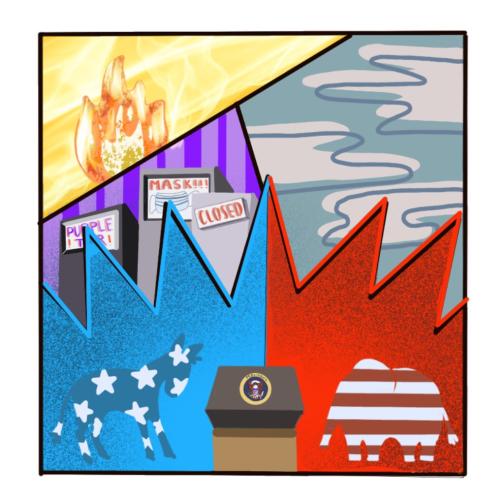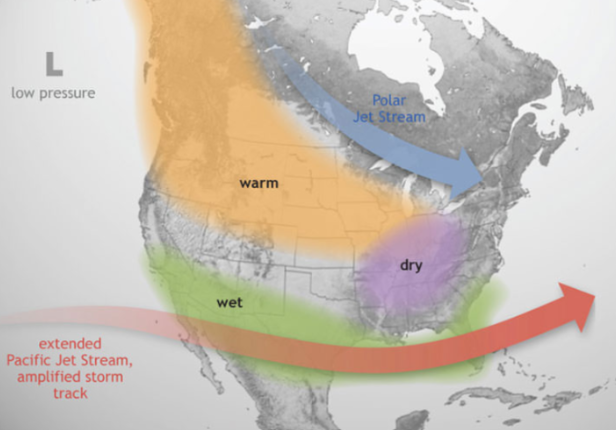
San Diego has been affected by extended hot and dry weather, wildfires, worsened air quality, and a historical turnout rate in the election.
The pandemic caused changes across San Diego as the county swung between the red and purple tiers of local COVID-19 cases and transmissions since May. The purple tier is defined as more than seven COVID-19 cases per 100,000 people each day, and is the most restrictive tier, forcing many businesses to close their doors. The red tier has four to seven cases per 100,000 people daily, and places less restrictions on public outings and business practices.
In July, San Diego entered the purple tier. Since then, the number of cases decreased, and San Diego moved back into the red tier for a short time. Businesses were allowed to open indoors at limited capacity, and select students could go back to school.
Then, in October, the number of cases was on the rise again, and, as of November, San Diego re-entered the purple tier. Restrictions have been reinforced, and many facilities are only allowed to provide their services outdoors. Schools who have begun their reopening process before the county was placed in the purple tier can continue with their plans, but the rest will continue to remain closed and only offer virtual learning.
Wildfires raged through the entire west coast of the United States, and San Diego is no exception. In San Diego, the Valley Fire started on September 5 and lasted for 20 days before it was fully contained. It burned 16,390 acres of land and destroyed 61 structures. The Valley Fire not only exacerbated the particle pollution in the air at the time, but also added to the extreme heat felt across San Diego.
San Diegans experienced the longest period of high temperatures this summer and early fall. The excessive heat lasted two months, from late July to early October. During this time, daily high temperatures have been much higher than previous years, ranging from 90 to 114 degrees. During the Labor day weekend alone, the high temperature broke or reached nine records across San Diego county.
Air quality has been consistently worsening in San Diego. San Diego’s visible air pollution, smog, is among the nation’s worst. The smoke from the wildfires is a main factor. The toxic particles from wildfires have settled and stayed low in the air due to the stagnant weather in September.
Furthermore, this election year has been different from previous election years. This year, San Diego witnessed a voter turnout rate of 84.7%, exceeding the previous record voter turnout rate of 81%, set in the 2016 presidential election. Even though San Diego has been drastically affected by the COVID-19 pandemic, activists across the county have found a way to promote voting and making change within their communities. Massive protests following the death of George Floyd in June led to increased voter turnout in the youth across the county.
2021 is a new year with new opportunities. Pharmaceutical corporations Pfizer and Moderna have both announced above 90% or greater efficacy in their COVID-19 vaccines. Pfizer has submitted a vaccine to the FDA for an emergency authorization of their coronavirus vaccine, developed together with German partner BioNTech. Once approved, Californians will begin to receive vaccines throughout 2021.
Lily Wu is the Features Editor for The Talon. Her interest is in STEM and writing. In her free time, she enjoys doing crafts and baking. She also likes to play board games.
Iris is a former graphics-designer for The Talon. She has always enjoyed creating art to enhance writing. She has always held a deep interest in art and she hopes to display that passion through The Talon.







